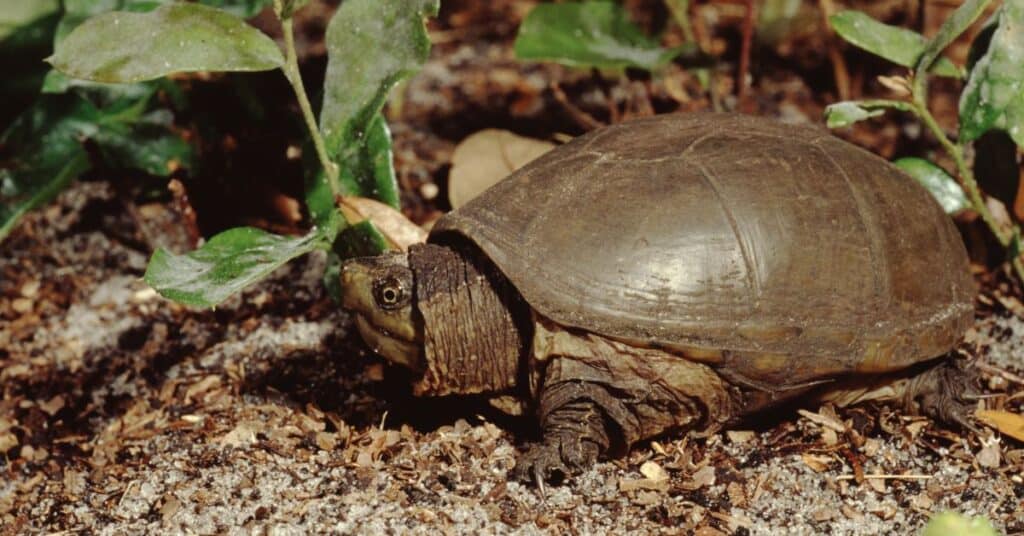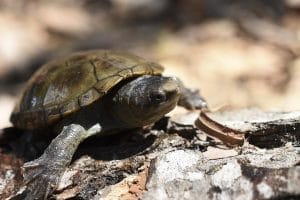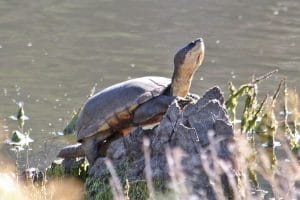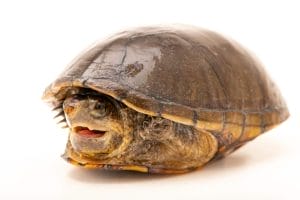Kinosternon subrubrum (Eastern Mud Turtle)
Home > Turtle Database > Kinosternon subrubrum (Eastern Mud Turtle)

The Eastern Mud Turtle (Kinosternon subrubrum) is a small, semi-aquatic turtle known for its adaptability and inconspicuous nature. Its unassuming shell and secretive behavior make it a fascinating species native to the southeastern United States.
Native To These Regions
Alabama (USA), Arkansas (USA), Delaware (USA), Florida (USA), Georgia (USA), Illinois (USA), Indiana (USA), Kentucky (USA), Louisiana (USA), Maryland (USA), Mississippi (USA), Missouri (USA), New Jersey (USA), North Carolina (USA), Oklahoma (USA), South Carolina (USA), Tennessee (USA), Texas (USA), Virginia (USA)Native Turtle Species Map – Find Turtles by Region
Scientific Classification
Kingdom: Animalia
Phylum: Chordata
Class: Reptilia
Order: Testudines
Family: Kinosternidae
Genus: Kinosternon
Species: subrubrum
Common Names
Eastern Mud Turtle, Common Mud Turtle
This Hilarious Turtle Book Might Know Your Pet Better Than You Do
Let’s be real—most turtle care guides feel like reading a textbook written by a sleep-deprived zookeeper.
This one’s not that.
Told from the snarky point of view of a grumpy, judgmental turtle, 21 Turtle Truths You’ll Never Read in a Care Guide is packed with sarcasm, sass, and surprisingly useful insights.
And hey—you don’t have to commit to the whole thing just yet.
Grab 2 free truths from the ebook and get a taste of what your turtle really thinks about your setup, your food choices, and that weird plastic palm tree.
It’s funny, it’s honest, and if you’ve ever owned a turtle who glares at you like you’re the problem—you’ll feel seen.
Identification
Description
Eastern Mud Turtles are small, typically measuring 3–4 inches in shell length. Their carapace is smooth and oval, ranging from brown to olive, while the plastron is hinged and yellowish. They have webbed feet suited for swimming and a slightly domed shell.
Sexual Dimorphism
Males have longer tails with a noticeable spine at the tip and a concave plastron, whereas females have shorter tails and a flat plastron.
Check more turtles from the Kinosternon genus
Native Origin and Distribution
Geographical Range
This species is found primarily in the southeastern United States, extending from New Jersey to Florida and westward to Texas.
Preferred Habitat
Eastern Mud Turtles prefer shallow, slow-moving water bodies like ponds, marshes, and ditches. They thrive in areas with soft substrates and abundant vegetation.
Behavior
Feeding Habits
They are omnivorous, feeding on small invertebrates, fish, amphibians, and aquatic plants.
Predators
Predators include raccoons, foxes, large birds, and snakes. Juveniles are particularly vulnerable due to their small size.
Reproduction
Breeding Season
Mating occurs in spring and fall, with nesting taking place during late spring to early summer.
Reproductive Method
Females lay 2–6 elliptical eggs in a shallow nest on land. Hatchlings emerge in late summer or early fall, depending on temperature.
Conservation
Extinction Status
Currently listed as Least Concern by the IUCN.
Threats
Habitat destruction, pollution, and road mortality are the main threats.
Conservation Measures
Protection of wetland habitats and the creation of wildlife corridors help ensure population stability.
Economic Importance
Eastern Mud Turtles contribute to ecosystem balance by controlling invertebrate populations and promoting nutrient cycling in aquatic systems.
Interesting Facts
Eastern Mud Turtles are excellent climbers and can scale steep banks to find suitable nesting spots. Despite their aquatic tendencies, they spend significant time on land during dry seasons.

About Author
Muntaseer Rahman started keeping pet turtles back in 2013. He also owns the largest Turtle & Tortoise Facebook community in Bangladesh. These days he is mostly active on Facebook.














